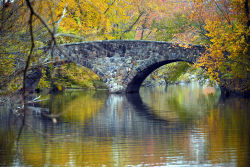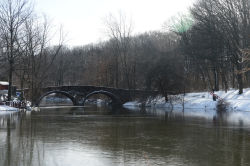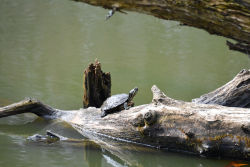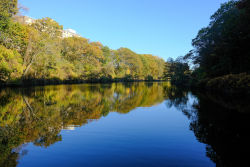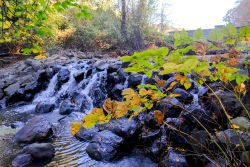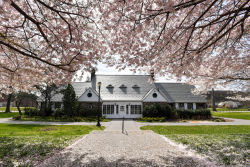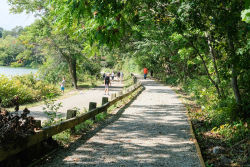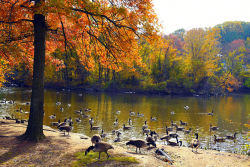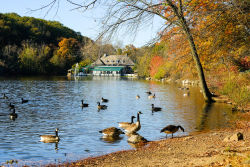Clove Lakes Park
Clove Lakes Park
What was here before?
The Lenape used a brook that flowed from Clove Swamp on this site as a route to the Kill Van Kull. By 1683 Governor Thomas Dongan owned a large tract of land in the northern section of Staten Island where he hunted bears. He built several dams across Clove Brook to power local grist and lumber mills. When Dongan returned to England, he left his property to his sons, one of whom sold off land to pay for his heavy alcohol habit. A subsequent owner, Abraham Britton, built a dam and a grist mill at the east end of Britton’s Pond in 1825. The body of water created by the dam was called Clove Lake.
In 1863 newspaper publisher Erastus Brooks established a large estate and residence in West Brighton at the corner of what is now Forest Avenue and Clove Road. He built another dam, which created Brooks Lake. The Staten Island Water Company later bought the rights to use the water from this dam. Other dams created Martling Lake, the site of an icehouse in the mid-19th century, and Schoenian’s Pond, which no longer exists.
How did this site become a park?
Staten Islanders considered making this area a park as early as 1897. By that time the grist mill had burned down, the icehouse had suffered numerous fires, and the dams dividing the three lakes were unsafe and washed out several times. Leading Staten Islanders William T. Davis, Charles Leng, and Frederick Law Olmsted advocated to preserve this area’s natural beauty. In 1921 and 1923 the land around and including Brooks Dam was acquired as a city park. The park was expanded through several additions between 1928 and 1989.
The development of Clove Lakes Park began in the early 1930s due in large part to hundreds of workers hired by the City’s Emergency Work Bureau during the Great Depression. There are several picturesque stone bridges that date to the early 1930s across the park as well as a one-story building built to provide restrooms and other facilities. Constructed of native fieldstone, the “Field House” was designed by O.A. Madsen and renovated by Aymar Embury II. In 1989 the building was named “Stonehenge” and is now home to NYC Parks’ Staten Island borough offices.
The Staten Island War Memorial Skating Rink opened in the southeast part of the park on Thanksgiving Day in 1987. A former boat house on a small island in the middle of Clove Lake is now a restaurant.
The park features many recreational areas, including an adult fitness area, three miles of hiking trails, two playgrounds, baseball fields, football fields, soccer fields, and basketball courts. In 2020, a five-kilometer cross country running trail was reconstructed.
Natural features in the park include a more than 300 year old tulip tree known as the “Clove Lakes Colossus” in the park’s northwest corner, possibly the largest single-trunked great tree in the city. Clove Lakes Park is populated with outcroppings of ash green serpentine rock. The park is also home to the Leeseberg Perennial Garden, completed in 2001.
What is this park named for?
Clove Lakes Park derives its name from the Dutch word “kloven,” meaning cleft. Here, the cleft is the valley and brook that were formed by glaciers 20,000 years ago between Emerson and Grymes Hills.
Check out your park's Vital Signs
Clean & Safe
Green & Resilient
Empowered & Engaged Users
Share your feedback or learn more about how this park is part of a
Vital Park System
Contacts
Park Administrative Office: (718) 390-8000

